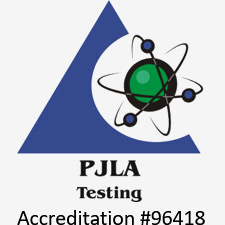At first glance, particle analysis and particulate analysis might look interchangeable. Both examine small solid materials, but they each serve different purposes. Particle analysis focuses on how a material’s particles behave, while particulate analysis identifies and characterizes unwanted contaminants. Recognizing which form of analysis a project requires can influence everything from product performance to regulatory compliance. So, how can the most suitable method be determined? It necessitates examining both approaches in detail to understand their distinct purposes, the questions they aim to answer, and the insights they provide.
What is particle analysis?
Particle analysis characterizes the properties of particles that are part of a material or formulation. It provides clarity on how these particles influence the performance, stability, and overall quality of the item being studied.
What it measures
- Particle size and size distribution
- Shape and morphology
- Surface area and porosity
- Zeta potential (surface charge) and dispersion stability
- Composition and internal structure
Where it’s used
- Materials science – evaluating powder flow, coating uniformity, or composite strength
- Formulation development – controlling suspension or emulsion stability
- Nanotechnology and colloid research – characterizing nanoparticles or micelles
- Environmental studies – assessing airborne or dispersed particles
Common analytical methods
- Dynamic Light Scattering (DLS) and Laser Diffraction – for particle size measurement
- Scanning Electron Microscopy (SEM) or Transmission Electron Microscopy (TEM) – for shape and surface imaging
- Field-Flow Fractionation (FFF) or centrifugal analysis – for separating and quantifying complex mixtures
By identifying how particle properties determine material performance, particle analysis lays the groundwork for controlled, reproducible, and reliable results across various scientific and industrial applications, like formulation development, material optimization, and quality assessment.
What is particulate analysis?
Particulate analysis, sometimes referred to as particulate matter or residue analysis, examines particles that are not supposed to be present. These may be contaminants, residues, or debris introduced during manufacturing, handling, or storage.
What it measures
- Particle count and size thresholds (for example, greater than or equal to 10 micrometres or 25 micrometres in injectables)
- Morphology and composition of foreign materials
- Chemical identity and elemental makeup
- Source or origin of contamination
Where it’s used
- Pharmaceutical testing – verifying cleanliness of injectables or solutions (USP <787>, <788>, <789>)
- Medical device evaluation – detecting particles shed from coatings, implants, or tubing
- Manufacturing quality control – confirming cleanroom or process integrity
- Failure and forensic analysis – tracing debris to equipment wear, packaging, or environmental sources
Common analytical methods
- Fourier-Transform Infrared (FTIR) microscopy – for chemical identification
- SEM-EDX – for morphology and elemental composition
- Light obscuration and electrozone sensing – for particle counting in liquids
- Filtration and extraction methods – to isolate particulates from complex matrices
Applying particulate analysis can identify what contaminants are present, determine how many exist, and trace where they originate, generating essential data for root cause investigations, risk assessments, and regulatory compliance.
Key distinctions between particle and particulate analysis
Although particle and particulate analysis generate valuable data, their purpose, context, and outcomes are fundamentally different:
Purpose and intent
- Particle analysis characterizes the physical properties of materials to quantify how particle attributes affect behavior and performance.
- Particulate analysis investigates contaminants to ensure safety, cleanliness, and compliance in materials, devices, and manufacturing processes.
Application and context
- Particle analysis is used in research, product development, and materials engineering, where the goal is to improve a formulation or process.
- Particulate analysis is applied in regulated manufacturing environments, particularly those involving pharmaceuticals and medical devices, where verifying purity is crucial.
Analytical outcomes
- Particle analysis delivers quantitative data such as size distributions, shape parameters, and statistical characterizations.
- Particulate analysis produces diagnostic information that includes chemical identity, source attribution, and potential contamination risks.
A variety of projects utilize particle and particulate analysis together, applying them both to establish a fuller representation of material behavior and environmental or process-related contamination, ensuring that analytical results reflect real-world performance.
How to decide whether your project requires particle analysis or particulate analysis
Choosing the right analytical method for a project depends on its objectives, the nature of the sample, and the governing regulations.
Particle Analysis:
Use particle analysis when:
- The goal is to clarify a material’s structure, uniformity, or stability.
- The particles themselves are the focus of the study, such as in powders, colloids, or suspensions.
- Information is required on particle size, shape, or distribution to improve formulation performance or process control.
- The work supports material development, formulation optimization, or product consistency studies.
Particulate Analysis:
Use particulate analysis when:
- The aim is to confirm purity, investigate contamination, or meet regulatory particulate limits.
- The material being tested is a fluid, finished product, or medical device that must be free from foreign matter.
- Insights are required to identify, count, or chemically characterize contaminants.
- The project involves regulatory compliance, quality control, or root cause investigation.
Recognizing the distinct purposes of particle and particulate analysis enables more accurate, efficient, and compliant testing, and using them in tandem can provide a better understanding of material performance and product integrity.
Analytical support you can trust
The decision between particle and particulate analysis depends on the focus of the project, whether it involves characterizing material properties or verifying product cleanliness. At Jordi Labs, our scientists specialize in both forms of analysis. Using FTIR microscopy, SEM-EDX, and light-scattering techniques, we provide regulatory-ready data aligned with USP 787, 788, 789, EN 45502, and ISO 14708 standards. Jordi Labs delivers the insight and accuracy you need to make confident, data-driven decisions. Reach out to us today to learn more about our particle and particulate analysis services.





